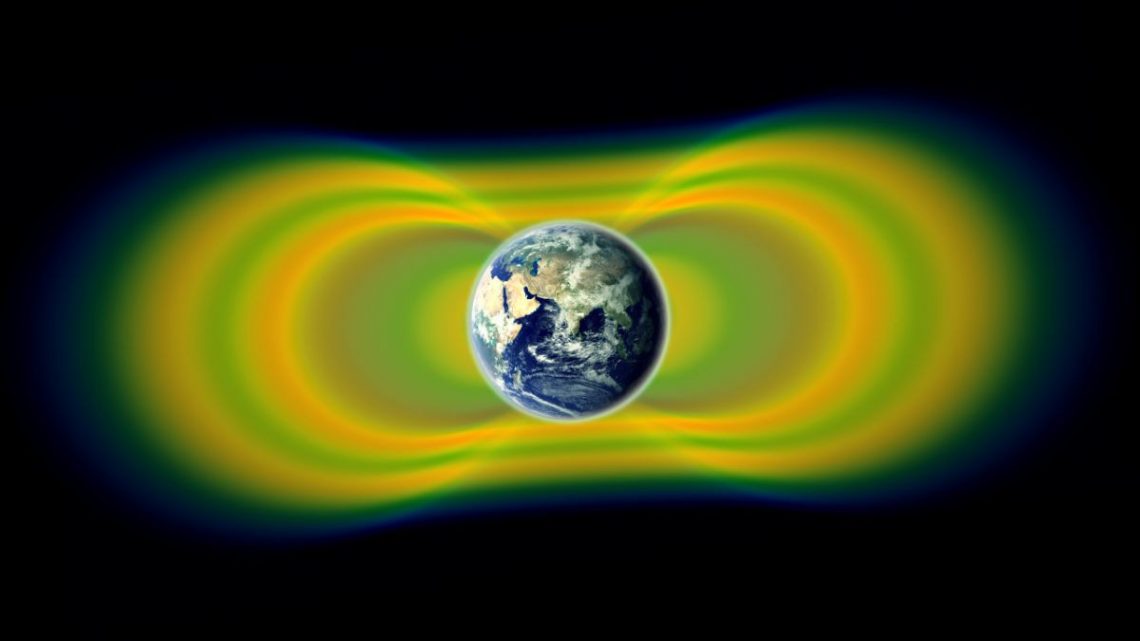
Fred Singer the Good (there is lots of bad and ugly)
April 8, 2020
Eli over the years has been singularly unhappy about Fred Singer, there is more, but feel free to search Rabett Run for the details. With the announcement of his death April 6, Eli went poking about the net and hooked an interesting whale.
Singer's best work was in the late 50s and 60s on Earths radiation belt, you know, the Van Allen stuff among related things. It turns out that while van Allen (James Hansen's doctor father, this is all very incestuous stuff as the bunnies will see) was the first to announce the discovery of, what else, the van Allen belts, the honor should have gone to a Soviet scientist, Sergei Vernov.
What Eli found was a letter from Fred Singer to Alexander Dessler, yep, Andy's dad
Your point is absolutely correct. Vernov lost his priority to the discovery of the radiation belt because of Russian secrecy. Vernov’s instrument on Sputnik-2 recorded radiation belt particles six months before Van Allen’s in Explorer-l. But the Sputniks elliptic orbit penetrated the belt significantly only in the Southern hemisphere, and the Russians did not release the telemetry code to anyone.
For nearly two years now I have been meaning to write you and comment you on the editorial “The Vernov Radiation Belt (Almost),” which appeared in the Nov 23, 1984 issue of Science.Now comes the ad for open science
Prof. Harry Messel, a noted cosmic-ray researcher and head of the School of Physics at the University of Sidney, told me the whole story in a Moscow hotel room (the Hotel Moskva, I believe) during the Cosmic Ray Congress in 1959. He recorded the Sputnik signal every time it passed over Australia, but they wouldn’t send him the code. When they finally asked for a copy of the recorded data, he told them to go to hell (as only Harry Messel could). Harry, you must remember, is a Ukrainian from Canada; he told the story with great glee.
But the full story is a little more complicated. Vernov did record the radiation belt but never interpreted his results properly. I have analyzed the matter in a review article on “Geomagnetically Trapped Radiation,” published in Progress in Elementary Particle and Cosmic Ray Physics Vol. VI. (North Holland Publ., Amsterdam, 1962). I enclose pp. 249— 258, “Historical Introduction,” and draw your attention to p. 254. Vernov et al reported in 1958 a 40% increase in count rate between 500 and 700 km. But only 12% can be due to cosmic rays; the rest must be radiation belt particles. Of course, had they gotten data up to Sputniks’s apogee altitude of 1680 km, then there would have been no doubt.
But Vernov is not the only one who missed discovering the trapped radiation. I don’t know about others, but I am certainly one of them ----four times to be exact!
1) In a 1950 Aerobee firing off Peru, I measured the east-west asymmetry of cosmic ray primaries, mostly relativistic protons. But I also measured the ionizing efficiency of the particles and found a component of high ion densities (presumably low-energy protons) with a reversed E-W asymmetry. (These were trapped protons; I later developed a theory for their E—W asymmetry (see p. 274), eventually confirmed by Heckman’s observations.)
My 1950 notebook indicates that I considered albedo protons emanating from and curving back into the atmosphere as an explanation. But statistics of the data were not good enough to draw firm conclusions. Some details are given in another review article on “The Primary Cosmic Radiation and its Time Variation” in Progress... Vol IV (1958), pp. 263-276. (See esp. p. 264).
2) In the summer of 1950 I flew thin-walled Geiger counters in balloons launched from an icebreaker between Boston and Thule. In the auroral zone, off Labrador, the count rate went crazy. I concluded that I was seeing noise from high—voltage discharge in the instrument, as the air pressure reached a certain low value. I never published the results; but evidently I was seeing trapped electrons of the outer belt. I should have either had a student like Carl McIlwain, or flown thick—walled counters along with the thin—walled variety.
3) By 1956 I was quite sure about the existence of trapped radiation (although I had not yet thought of the neutron albedo mechanism). I designed a 4-stage balloon-launched rocket for the Air Force OSR, to go to 4000 miles altitude. I then got the contract to supply a scientific payload, a simple Geiger counter.
The Air Force called the project Far Side and diddled a lot. But right after Sputnik they tried to launch it in a great hurry from Eniwetok. I never learned officially why the project failed; all I know is that I never received any data from my instrument. Too bad; because I had published an article in Missiles and Rockets magazine, around 1957, that we would measure trapped radiation in the Far Side project.That has the smell of a embarrassingly failed launch
I was one of the contenders for a spot on Explorer-l, with an experiment to measure meteoric erosion, using a Geiger counter. It would have seen trapped radiation, but the experiment got bumped. End of story.
I think this is the first time I have written all this down, or even thought about it in a coherent way. Your editorial stimulated all this; I know how Vernov must have felt.
I suppose I owe most of my radiation belt insights to Hannes Alfven, from whom I learned a great deal about charged particle motion. Even earlier, John Wheeler at Princeton taught me some useful things about ergodic motion of particles in a trapping region.
Someday I’ll document the evolution of the ideas and theory a little better. For the time being, the enclosed will have to do.
My best wishes to you,


